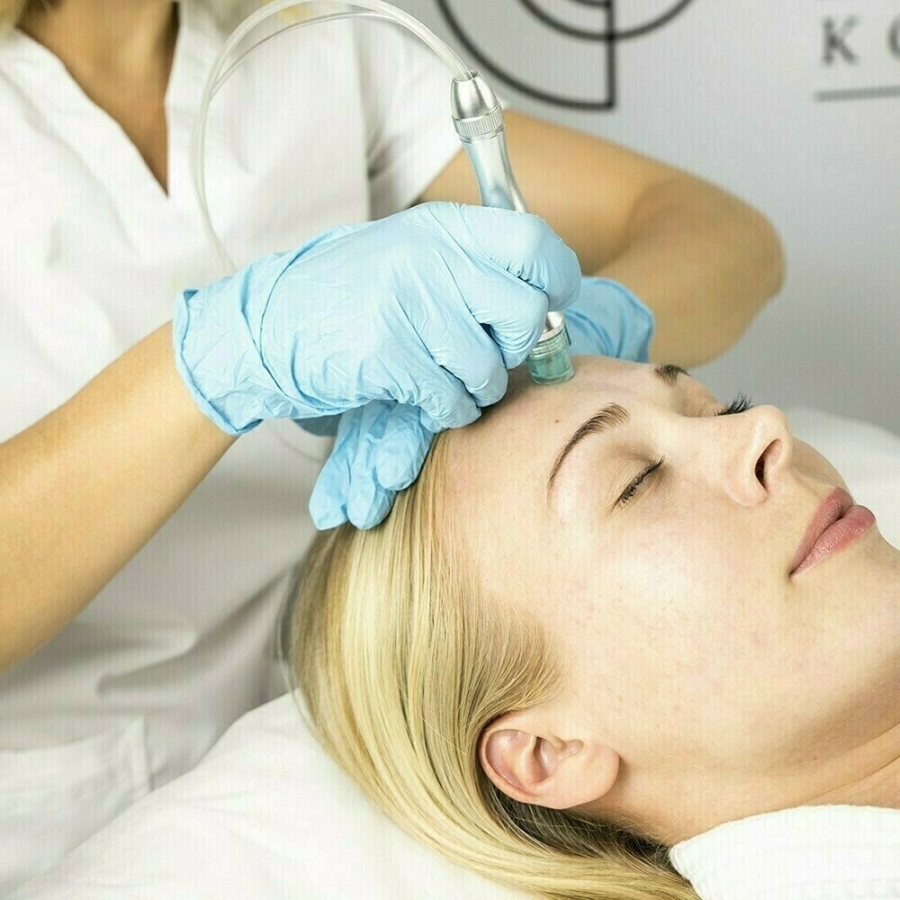If you have a history of acne that led to scarring, uneven skin tone, fine lines or wrinkles and you have been hearing about Microderm but you have sensitive skin, try looking into the hydrodermabrasion. A hydrodermabrasion is very similar but works for most skin types. Chemical peels are another option, but they have their own set of potential complications. So, which would you want to choose- hydrodermabrasions or chemical peels? You may be wondering which would be best. If you have just started looking into the options, it may sound like they all work similar and it will not matter what you choose but like all treatments, not everything that works for one person will work the same for others.
Many people are already familiar with Microdermabrasions, but the hydrofacial is now taking skin treatments by storm. They are generally safe for people who can not usually get a microderm nor a chemical peel. What are the differences between a hydroderm and chemical peel? Which should you get for your skin type or needs? Here is a comparison to help you figure it out.
What is a Hydrodermabrasion? Who is it for and What Should You Know?
A Hydrodermabrasion is similar to a Microdermabrasion. With a hydrodermabrasion, instead of using a fine grain to penetrate pores, water with peptides and serums to hydrate and exfoliate skin. A hydrofacial removes bacteria and other impurities using a similar suction to a microderm.
The reasons people will get hydrodermabrasion include fine lines, wrinkles, blackheads, acne, acne scars, uneven skin tone, sun damage and discoloration.
Hydrofacials work well for all skin types. Unlike the Microderm, sensitive and drier skin will see positive results.
Very few will see problems, the primary will be that your skin will be more sensitive to the sun for the following few days, so it will be important to either stay out of the sun or wear a higher SPF.
Contraindications:
- Pregnant
- Recently had another treatment such as a chemical peel, microdermabrasion or lazer or light therapy treatments.
- Sunburn
- Waxing
- Skin infection
- Potential skin cancer moles
- Epilepsy
- Cancer
- Certain autoimmune disease
- Diabetes
The last four are not definite nos, they should be under medical control and mentioned to the skin specialist before starting treatment.
What is a Chemical Peel? Who is it for and What Should You Know?
A chemical peel works by removing the top layer of your skin using a chemical mixture that causes your skin to blister and peel off. The results are normally clearer and less wrinkled skin.
Typically, people with fine lines, wrinkles, acne scars, sun damage and other discoloration are the primary targets of chemical peels. It can also help reduce how dark freckles stand out.
It works best for fairer skinned people. It can work for darker skin, but there is a higher risk of uneven skin coloring the darker your skin is. You can get peeled by a skin therapist, but they normally will need to be doing the treatment under a doctor or dermatologist’s watch.
Chemical peels come in three main varieties. Light peels are done with salicylic acid or glycolic acid. They are easier on the skin and just remove the top layer. The recovery time is usually up to a week and the result is smoother complexion and it helps with dry skin. They can be redone within two to five weeks, depending on how sensitive your skin is. These are generally safe for most people.
Medium peels are done for deeper wrinkles and acne scarring. They remove the top layer and part of the middle layer of skin. They are done by using a gauze or sponge to put the chemical on your skin. They may add a blue dye that will possibly dye your skin for about a week, but the blue dye will go away after a while. There will not need to be a neutralizing ointment added but they will allow you to cool your skin down if it gets hot. You should not feel burning but if you feel tingling, that is fine. Just make sure to tell them if it starts to actually hurt.
They will leave it on for about 20 minutes.
If you get a deep peel, they will sedate you. They will apply phenol to part of your skin. They won’t’ do it all over or it can cause you to be overexposed and cause damage. Each application will be done for 15 minutes. This is the most extreme. You will see the strongest results and will not have to have as many done but it can cause damage if you’re not fully honest with the doctor.
Contraindications:
You will need to stop medications like doxycycline, retinoids, salicylic acid, benzoyl peroxide, products containing vitamin C, lightening agents, and exfoliants of any kind. If you’re on any medication, ask your doctor if you will need to stop before getting peeled.
Since you will be seeing a medical doctor, they will determine how deep the peel needs to go and the strength of the chemicals.
There are three different severities of peels- a light chemical peel is ideal for fine lines, minor wrinkles, and light color damage.
What Should You Expect During and After a Hydroderm?
You will get to the spa or clinic and lie down on facial chair. You will have the beginning examination of your skin done to determine what needs worked on and what condition your skin is in. After the skin therapist takes your information down, you will start with the treatment. The full treatment typically takes around 40 minutes to an hour to complete.
They will put a mix of serums, depending on your skin’s needs, with the saline solution. The treatment itself will consist of a suction hose with a diamond tip. The tip will have a varied coarseness (depending on how sensitive your skin is). The hose will spray saline solution on your face and suck it back up. They will take another wand to spread the serum.
Typical aftercare:
- Drink lots of water
- Lather up with sunscreen.
- Do not rub your face too much.
- Use a moisturizer.
Talk to your doctor/skin therapist about when you can start using your normal facial products again. It is best to not exfoliate for a few days, but you should be able to start using your normal skin products within the next day.
Expect to see immediate results.
- clearer skin
- less visible fine lines or uneven skin tone
- skin plumped up
- smoother skin
- more moisture/hydration
It will leave you feeling dehydrated, so it’s best to drink a lot.
What Should You Expect During and After A Chemical Peel?
When getting a chemical peel, you will be led into the room and sat down. Once they get your information, they will do a small patch test. This is a chemical treatment, and it will be extremely important that you tell them at any point if you start to hurt. The process is technically burning part of your skin off, but it should not start to sting bad during the treatment. If you pass the patch test, the treatment will last from 20 minutes to about 40-60 minutes. Your face will be cleansed and once you are cleansed, the doctor/skin therapist will put the chemical mixture on your face and leave it for 3 to 5 minutes, typically. If they are using a self-neutralizing peel, they will leave it on as long as 20 minutes.
Some burning and tingling may be normal, but if you feel a constant burn or ache, let the doctor know. If it feels like you are being burned, let them know. Some discomfort may be normal but chemical peels can lead to chemical burns if your skin is too sensitive or it’s left on your skin for too long.
Your skin will be sensitive while the chemical works and peels your skin off. Healing should take around a week and it’s important to not touch your face. You may cause irritation to the new skin layer forming or cause breakouts. Your skin will peel off naturally, and with it, some of the damage you are getting fixed.
It typically will take several treatments to get the results you want. If you have a gentle (light) peel, you will see results after the first treatment, but it will only last one to two months before you will need to book your next appointment. When you have your initial treatment, you should be able to work out with your provider how many treatments they can do to get the results you’re looking for. It will be less the stronger the treatment, but higher treatments come with higher risks. If you get a medium peel, you will see results a little bit more drastic and it will typically last up to six months.
After care:
Do not rub your face.
Touching your face will also be a bad idea.
Keep your hair off your face.
Do not use too many facial products.
For the first week, try to keep moisturizer to a minimum and if you put it on, pat it and don’t rub. Your skin will look dry and that is normal. No amount of moisturizer will keep it from looking dry until the skin peels off naturally.
If you go out in the sun, make sure to use a high quality sunscreen but don’t rub it in, pat it on.
You will see immediate results after the first peel
Smoother skin
Less pronounced wrinkles and fine lines
Brighter skin
Less acne or scarring
If you get a medium chemical peel, you will see more pronounced results and may or may not need a second peel. You will see
Smoother skin
Brighter skin
Deeper wrinkles won’t be as pronounced.
Less acne scarring.
What Are the Potential Side Effects of a Hydrodermabrasion?
Since this is a noninvasive treatment, you won’t likely have too many side effects. This is primarily saline solution/water and suction. However, there are a few potential side effects to look out for.
If you’re on blood thinners or medications like Aspirin, you may find that you bruise easier. If you don’t stop taking medications like Retin-A or retinoids, you may find that your skin is more sensitive.
Your face may swell up a little after the treatment and that is normal. Also, normal would be if you felt a cool and tingling sensation while the treatment is going on.
What Are the Potential Side Effects of a Chemical Peel?
Although they are generally safe, you can expect some redness, scabbing and swelling. The skin will turn red and will look dry for a while after the peel is done. This is normal but they can, at times, lead to scarring. It’s normally on the lower areas of the face and not a common side effect. There are medications the dermatologist can give you to lesson any scarring.
Another potential side effect is a change in your skin color. They can lead to hyper or hypopigmentation. This is more likely in darker skinned individuals and deeper peels can cause hypopigmentation and superficial (lighter) can cause hyper.
Rarely, they can lead to bacterial or fungal infections which is why certain common infections are potential contraindications.
The most serious, but otherwise uncommon is potential heart, kidney, or liver damage. Deep peels use carbolic acid and phenol can harm the kidneys or liver. The specialist doing your peel should be trained properly in order to avoid overexposure to those two chemicals.
It is recommended to get the light chemical peels once a month to month and a half. The medium peels take a bit more recovery time, but they may need to be repeated one or two times and the deep peels may not need repeated.
If you’re interested in a light peel, you can expect to pay around 150 on average. If you’re looking for a medium peel, you can expect to pay closer to 500 or 600 and if you’re looking for a deep peel, they can go up to 3000 per peel, but you will need less. Of course, those are averages. You may be able to find deals or find different prices at different places, just make sure you’re going to a good, licensed skin therapist or Dermatologist.
Hydrofacials may be repeated every two to four weeks, or at the dermatologist/skin therapist’s recommendation.
If you are looking to get one done, you can expect to pay around 175 on average for one session. The session will take around 30 to 60 minutes to finish. They can be done during a lunch break at work or when you have an extra hour or two.
In the end, it will depend on what you are looking for and what types of condition your skin has. If you are looking to improve wrinkles and do not have any skin conditions (or sensitive skin), a chemical peel may be your best bet. If you are looking for hydration as well as plumping or you have sensitive skin, a hydrodermabrasion may be best for you. The best way to determine is to speak with your Dermatologist or skin therapist and decide.
Typically, chemical peels are best for scars, wrinkles, and discoloration. Hydrodermabrasion machine is good for dehydration, damaged or minor wrinkles or if you have sensitive skin.
Check our article "Why Every Esthetician Needs a Hydrodermabrasion Machine: Enhancing Skincare Results"



































